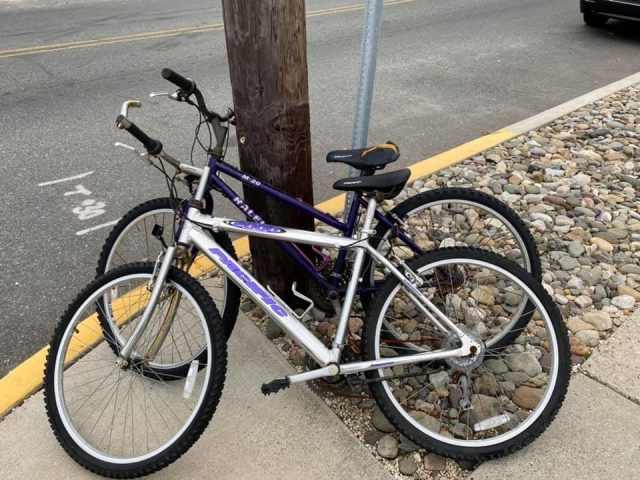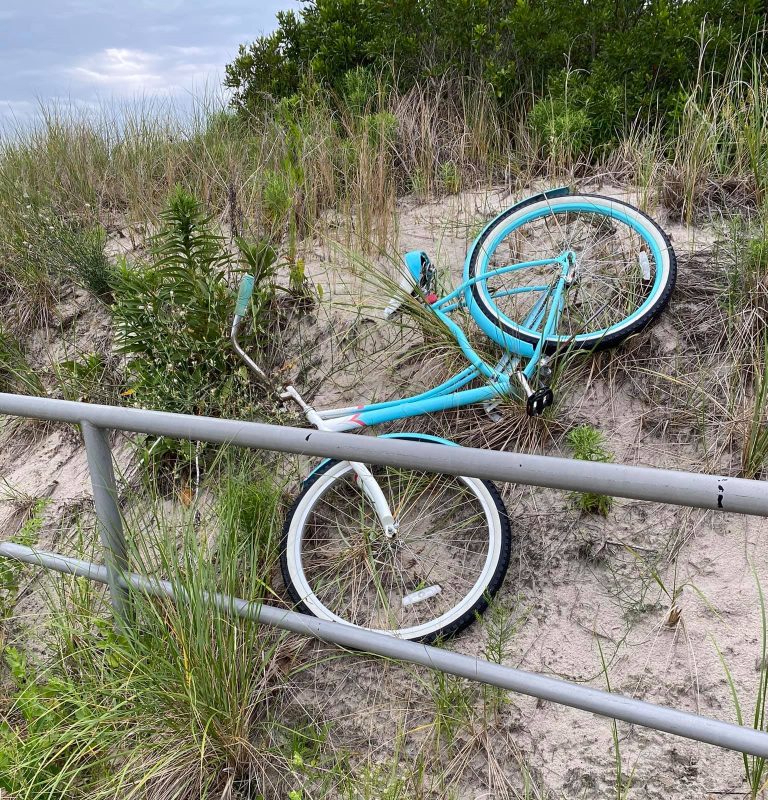
By DONALD WITTKOWSKI
These are hardly Bonnie-and-Clyde types outrunning the cops in souped-up cars after robbing a bank.
No, the preferred means of getaway for thieves in Sea Isle City this summer seems to be a bike.
And what are they stealing?
The bike they are riding on.
Sea Isle Police Chief Tom McQuillen has some simple words of advice for bike owners to deter the thieves: Get a lock.
“Locking a bike is the biggest thing you can do. Or put it in your garage or house,” he said in an interview Wednesday.
Bike theft is a common problem in many Jersey Shore communities summer after summer, but social media has focused even more attention on the issue lately. Facebook, for instance, is filled with photos of supposedly stolen or abandoned bikes in the streets, on the beaches or in front yards.
McQuillen said bike theft in Sea Isle this summer isn’t any worse than in previous years, but it certainly has police on the lookout.
“It’s something we’re aware of and keeping an eye on,” he said.
Bike theft, McQuillen pointed out, is a crime of convenience. Bikes are plentiful and often unlocked, making them an easy mark for thieves.
“They see it, and it’s something they think they can get away with,” McQuillen said.
Each summer, scores of bicyclists descend on the beach town to take advantage of the gorgeous weather when they are on vacation.
Owners often leave their bikes – unlocked – on the pathways to the beach. Sea Isle’s oceanfront Promenade is another area crowded with bikes, as is the downtown business district.
McQuillen said thieves are well aware of the popular areas for bikes. The bikes themselves allow thieves to make a quick getaway.

Bike theft in Sea Isle usually doesn’t happen at homes, underscoring the effectiveness of placing bikes inside the house, the garage or a locked shed to keep them safe, McQuillen said.
Unless the bike is reported stolen, police generally have no idea whether the person riding it is the legitimate owner or a thief, McQuillen said.
“You can’t go stopping everybody you see on a bike and say, ‘Is that your bike?’” he said of the challenges for police to catch thieves.
McQuillen emphasized that owners can also help themselves and police by keeping a record of a bike’s make, model and serial number and any distinguishing features such as the color or special markings.
“Make a list of identifying features and it will help us recover a stolen bike,” he said.
McQuillen urged owners to contact police immediately if they discover that their bike is stolen.
On some days, Sea Isle police receive two or three calls about stolen bikes, McQuillen said. Stolen or abandoned bikes recovered by police are stored by the city for six months. If the owners do not reclaim them within six months, the bikes are auctioned off each spring by the city.
Charges for bike theft range from a disorderly persons offense to a third degree crime, depending on the value of the bike.
If someone steals a bike valued under $200, they face a maximum penalty of six months in jail and a $1,000 fine. For stealing a bike valued between $200 and $500, the maximum penalty is 18 months in jail and a $10,000 fine. The theft of a bike valued at $500 and above could result in a jail term of three to five years and a $15,000 maximum fine, McQuillen said.
Noting that thieves generally prefer an easy target, McQuillen stressed the importance for owners to secure their bikes with a strong lock – especially if it is left at the beach, the Promenade or somewhere else in public.
“Try not to tempt fate,” he said.







